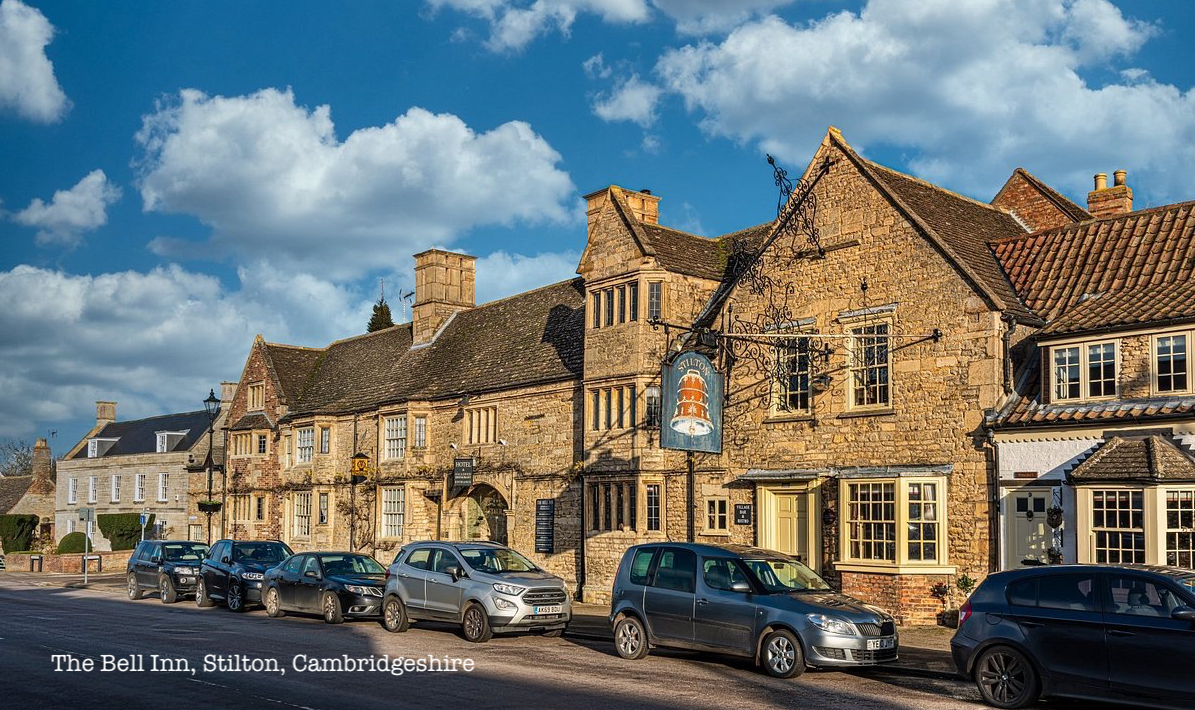Your pressing questions answered (including why that is a BRILLIANT pun)
Uh?
(some people call this the introduction)
Groceries’ price inflation is down to 16.5% this month (June 2023). And, apparently, this is good news. At times like these people have questions. Legitimate and difficult questions, which we are going to studiously sidestep in the name of epicurean curiosity and lols (1).
What we want to know is how can a cheese that owes its name and popularity to a service station on the A1 (2) inspire such passion? Who thought that an ‘Eau de Stilton’ fragrance was a good idea? Why can’t you make Stilton in the village of Stilton? I’ve read a whole book about Stilton so you don’t

have to (actually it was very interesting if you like history and, er, cheese), and if I can’t share my thoughts about the ‘King of Cheeses’ with you here then what the hell is this blog for? (comments are open below if you want to stop reading now and move straight to insulting me).
So, I like Stilton. A while ago, circa 1981, I used to work as a waiter in a posh, two star restaurant in Versailles, France (Les Trois Marches since you ask). They had a huge cheese trolley and I quickly realised that none of the French staff knew what all the cheeses on it were. I took the cheesemonger to one side, got all the info and quickly became the strange ‘Anglais’ who had all the cheese intel down. I once said to the head chef/patron Gerard Vié, somewhat mischievously, that Stilton was the best cheese in the world. I might just as well have said that Germans have the best sense of humour in the world. What I mean is, he wasn’t having it. He mumbled something about Roquefort and threatened to fire me.
But it is, isn’t it? The best I mean. Creamy, salty, with a mellow nutty sweetness and a bracing aftertaste, crumbly but not annoyingly so. What’s not to love?
A Service Station? What now?
The village of Stilton, in what is now Cambridgeshire, is about 80 miles north of London on what was once referred to as The Great North Road, now the A1. At that distance it was the perfect first day’s staging post for carriages heading to Scotland from London in the 1720’s, when Stilton the cheese first started being talked about.

After buying the Bell Inn in 1830, the enterprising inn keeper, Copper Thornhill, clearly a bit of an entrepreneur and a cheese lover, had found a particularly delicious blue cheese being made by Frances Pawlett in nearby Melton Mowbray and, so the legend goes, teamed up with her to sell the cheese from the market at his Inn to travellers and traders stopping over for a good night’s sleep and some cheese-based snacks, and to take it down to London to be traded at the Cornhill Exchange. So good was the cheese that its reputation spread up and down the land with the travellers, it came to be named after the village it was sold in rather than the one(s) it was made in, and the name stuck. Daniel Defoe wrote about it in 1724,
“We pass’d Stilton, a town famous for cheese, which is call’d our English Parmesan, and is brought to table with the mites or maggots round it, so thick, that they bring a spoon with them for you to eat the mites with, as you do the cheese.”
The Bell Inn could stable 300 horses and so you see, it was essentially an 18th Century service station with a sideline in exotic cheeses.
So what is it, this Stilton of which you speak?
As one of a handful (10, so two handfuls) of UK cheeses that has been awarded a Protected Designation Origin (PDO) by the EU, there are rules about who can and can’t make Stilton and the recipe they have to use.
To qualify as Stilton, the cheese must be made in the counties of Derbyshire, Leicestershire or Nottinghamshire, must use pasteurised and, where possible, locally produced milk, be cylindrical in shape, have formed its own crust, be unpressed (see I told you the pun in the title was brilliant) contain blue veins radiating from the centre, have “a taste profile typical of Stilton”, and have a ‘minimum of 48% milk fat in the dry matter’ (whatever that means).
Pasteurised milk is left overnight to be transformed into curds with the addition of acid-forming bacteria, rennet and spores, especially Penicillium Roqueforti. The curds are drained, salted and fed into cylindrical moulds which are turned for 5 or 6 days and further drained – giving Stilton its evenly distributed moisture and open, crumbly structure. The cheeses are then moved into climate-controlled storage and the crust allowed to form. After 6 weeks they are skewered with stainless steel needles, allowing oxygen to penetrate and activating the Penicillium Roqueforti to create the distinctive blue veins. The cheese is ready after about 9 weeks. It is tested and tasted to make sure that it fits the “taste profile typical of Stilton”. If it doesn’t, it is sold as plain old blue cheese.
New dairies come and go but six dairies are currently licensed to market their cheese as Stilton, located in Melton Mowbray, Colston Basset, Cropwell Bishop, Long Clawson, Saxelby and Hartington – all fine, ancient English village names concentrated for the most part in the Vale of Belvoir. That name might be a bit French (thanks to William the Conqueror and all that).
So because Stilton village is not in any of the designated counties, Stilton cannot be made there, and before any ‘Brexit Bolsheviks’ start frothing at the mouth about EU meddling, this is something that the SCMA (Stilton Cheesemakers Association) sought and which the EU enabled. The PDO persists, despite Brexit, so Stilton cheese’s distinctive characteristics and regional specificity cannot be copied by cheating interlopers.
‘Eau de Stilton’. w.t.a.f?
Imagine the scene. In 2006 at a meeting of the SCMA someone, presumably quite high up in the organisation, high enough that the idea didn’t get immediately shat on from a great height, suggested that it would be a marvellous idea to launch a fragrance called ‘Eau de Stilton’ to broaden the market for Stilton the cheese.
I’m making this bit up, but surely the pitch was followed by a stunned silence, people looking at their glasses of water and wondering if they had been spiked with hallucinogens. Eventually, someone spoke, “Well Geoff, (remember I’m making this up) that’s certainly an interesting idea …” which Geoff takes as a green light and commissions the fragrance. In my imaginary meeting there were no women present because surely, had there been, a hand would have gone up and pointed out the possible pitfalls of launching a fragrance with the aroma profile of an under-ventilated gym locker.

But launch it they did, a limited edition perfume for men and women with ‘fragrance notes of Angelica, Clary Sage, Valerian Root and Yarrow’. Cat Deeley was to be the face of the fragrance. Bafflingly, production was never extended beyond the initial run. The story did make the local news of course (achievement unlocked) but I can’t help thinking that they would have been better served by taking a more humorous approach, like this ad by the makers of Canadian Gouda. As a media professional I can say quite confidently that this seems to me to have nailed the cheese/perfume axis of promotion.
The King of Cheeses
There aren’t nearly enough, if any, celebrity endorsements of Stilton to pad out this bit of the post. I’m not sure if Cat Deeley really was approached to be the face of ‘Eau de Stilton’, but I’ve read it more than once. We’ll have to make do with the story, possibly incorrect, that King George IV (b 1762, reigned 1820-1830) was very fond of a bit of Stilton and it was this that gave Stilton the nickname ‘The King of Cheeses’. As well as Defoe, GK Chesterton was sufficiently moved by his love of Stilton to compose a poem in celebration of its greatness;
Stilton, thou shouldst be living at this hour
And so thou art. Nor losest grace thereby;
England has need of thee, and so have I —
She is a Fen. Far as the eye can scour,
League after grassy league from Lincoln tower
To Stilton in the fields, she is a Fen.
It goes on, I won’t – you can read the rest here if you are interested.
The poem was apparently a parody of Wordsworth, which you can tell because it’s absolutely hilarious.
Phew!
(some people call this bit the conclusion)
Time to wrap up this first instalment of birth food sleep love death’s Adventures in Stilton. There will be more. A taste test is on the way, I’m planning to talk to some bona fide cheese folk and will be making a trip to the Vale of Belvoir to see if we can get a look round a Stilton dairy and track down the real ‘Geoff’ of the SCMA.
Footnotes
(1) Srsly for a moment, the cost of living crisis is real, people are struggling and would love to be able to afford any cheese, let alone Stilton. The self-imposed lols penalty for this post is a £25 donation to the Trussel Trust which does an amazing job running food banks in the UK, please consider donating too at https://www.trusselltrust.org/make-a-donation/
(2) A big road in the UK that runs from London to Edinburgh … started life as a Roman Road and right up till the introduction of the railways in the mid 19th Century Stilton, or Sticiltone as it was originally called, was an important market town on the route.
(3) Amazon Affiliate Link



